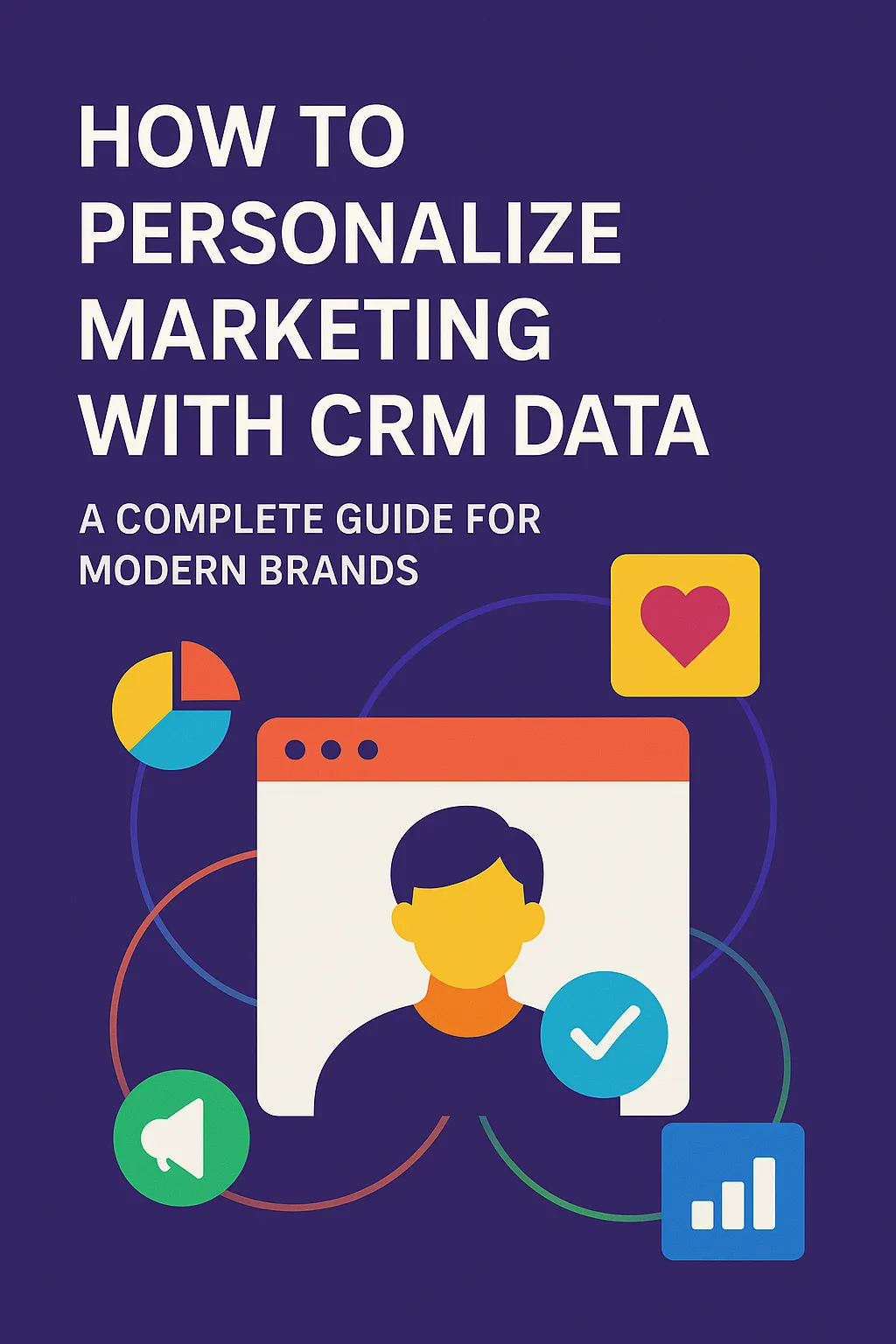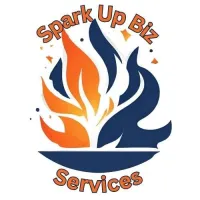Our Latest Articles

How to Personalize Marketing With CRM Data: A Complete Guide for Modern Brands
Personalized marketing is no longer a luxury or a nice-to-have—it’s an expectation. Today’s consumers demand relevant, contextual, and humanized messaging across every channel, and companies that fail to deliver risk frustration, abandonment, and churn. Yet the very tools that power modern marketing—from email to social media ads—often fall short if they aren’t fueled by deep, actionable customer intelligence. That’s where your CRM comes in.
A robust Customer Relationship Management (CRM) system centralizes contact information, behavioral histories, transactional records, and feedback loops, transforming raw data into marketing gold. Imagine anticipating a customer’s needs before they even voice them—recommending the perfect product at the prime moment, triggering timely follow-ups that feel one-to-one, and continuously refining your approach based on real-time signals. That vision isn’t futuristic; it’s attainable today through strategic CRM-driven personalization.
In this comprehensive guide, we’ll dive deep into how to turn CRM data into a scalable personalization engine. We’ll cover frameworks, tools, and practical examples designed to boost ROI, drive engagement, and foster loyalty. Whether you’re a marketer seeking to optimize email campaigns or a digital strategist aiming for omnichannel resonance, this guide will equip you with the strategies and best practices you need.
1. Why CRM-Driven Personalization Matters
1.1 The Rising Consumer Expectation
71% of consumers expect personalized interactions from brands, and 76% report feeling frustrated when marketing misses the mark. (McKinsey)
Brands that excel at personalization grow revenue 40% faster than peers and enjoy stronger customer retention.
Today’s shoppers are inundated with generic blasts: batch-and-blast emails, irrelevant social ads, and one-size-fits-all promotions. But when your messaging speaks directly to each individual’s history, preferences, and current context, it cuts through the noise. A message that references a recent purchase or behavior isn’t just more likely to convert—it deepens trust, loyalty, and brand affinity.
1.2 The Role of CRM in Personalization
Your CRM is more than an address book—it’s the nerve center of your customer intelligence. By capturing:
Contact details (name, email, phone)
Demographics (location, age, gender)
Interaction history (email opens, website visits)
Purchase records (frequency, spend, products)
Preferences & feedback (surveys, reviews)
Support interactions (tickets, call transcripts)
Lifecycle stage (lead, MQL, SQL, customer)
—you can create a holistic, unified profile for every customer. This 360° view powers dynamic segmentation, behavior-based triggers, and intelligent content injection across channels.

2. The Business Impact of CRM-Driven Personalization
Leveraging CRM data for personalization yields measurable ROI across marketing KPIs:
Higher Engagement Rates: Segmented and personalized campaigns drive 760% more revenue than generic sends.
Improved Satisfaction: Personalized experiences lead to higher Net Promoter Scores (NPS) and more referrals.
Increased Conversions: Brands report up to 760% more revenue through targeted campaigns.
Reduced Churn: Identifying at-risk segments via CRM data enables timely retention offers, lowering churn.
Higher Lifetime Value: Consistently relevant outreach fosters long-term relationships, increasing CLV.
These benefits aren’t hypothetical—they’re proven by case studies across industries, from retail and e-commerce to SaaS and financial services.
3. Key CRM Data Types for Personalization
Not all CRM fields are created equal. To maximize impact, focus on data types that drive immediate relevance and engagement.

4. Building Your CRM-Based Personalization Engine
Step 1: Intelligent Segmentation
Effective personalization starts with the right segments. Move beyond static lists to dynamic segments that update automatically based on real-time CRM signals.
Example Segments:
New Leads vs. Engaged Prospects: Tailor introductory content vs. deeper educational assets.
Frequent Buyers vs. Occasional Shoppers: Offer loyalty perks to VIPs and incentives to infrequent customers.
Cart Abandoners: Trigger reminder series with progressive incentives.
At-Risk Customers: Identify decline in frequency or average order value and launch win-back flows.
Modern CRMs allow multi-dimensional segmentation, combining demographic, behavioral, and transactional filters for laser-focused cohorts.
Step 2: Customized Customer Journeys
Use your CRM's workflow or automation engine to blueprint end-to-end journeys. Visualize each touchpoint—from the welcome sequence to post-purchase nurturing—and tailor messages to each segment and stage.
Illustrative Journeys:
Webinar Registrant to Customer: Confirmation > Prep Emails > Live Reminder > Replay > Sales Follow-Up
Cart Abandonment Series: Reminder 1 (24h) > Discount Offer (48h) > Social Proof (72h)
Loyalty Onboarding: Thank You > Exclusive Content > Referral Invite > Tier Upgrade Offer
By codifying these flows, you ensure every prospect and customer receives the right message at exactly the right time.
Step 3: Dynamic Content Insertion
Inject CRM attributes directly into emails, SMS, web pages, and ads. Sophisticated templates can display or hide entire content blocks based on profile data.
Use Case Examples:
Email Greetings & References: “Hi [First Name], notice you loved [Last Purchased Item]?”
Product Recommendations: “Because you purchased [Item], we think you’ll enjoy [Recommend].”
Time-Sensitive Alerts: “Your subscription renews on [Expire Date]. Renew now and save.”
Dynamic content enhances relevance and fosters a one-to-one feel at scale.
Step 4: Behavior-Triggered Campaigns
Set up real-time triggers so that actions in your CRM automatically spawn personalized outreach.
Popular Triggers:
Abandoned Checkout → Cart Recovery Email + SMS
Price Page Visits → Case Study Download or Demo Offer
Post-Purchase → Onboarding Sequence + Cross-Sell Offers
Inactivity (30/60/90 Days) → Re-Engagement Series
Behavioral triggers turn passive browsing into active engagement and sales.
Step 5: Measurement & Optimization
A true personalization engine is never static. Leverage CRM analytics and A/B testing to refine flows continuously.
Key Metrics:
Open & Click Rates by Segment
Conversion Rates & Revenue per Campaign
Customer Acquisition Cost (CAC)
Customer Lifetime Value (CLV)
Churn & Retention Rates
Iterate on subject lines, calls-to-action, timing, and content blocks to uncover the highest-impact combinations.
5. Real-World Success Stories
Amazon
Personalized recommendations account for ~35% of total revenue, driven by CRM cues such as browsing history and past purchases.
Netflix
“Top Picks For You” leverage viewing behavior and ratings to keep subscribers binge-watching.
Spotify
“Discover Weekly” playlists use listening patterns across millions to deliver hyper-relevant song mixes.
Sephora
Emails triggered by loyalty tier, skin preferences, and replenishment needs drive significantly higher open rates and basket sizes.
These leaders show that deeply integrated CRM personalization pays off in engagement, retention, and revenue.
6. Extending Personalization Across Channels
Personalization isn’t confined to email. Your CRM can power:
Social Ads: Sync segments to Facebook/Instagram custom audiences for precise retargeting.
SMS: Trigger time-sensitive texts for appointment reminders, flash sales, and replenishment nudges.
Website Personalization: Adapt web content--hero banners, product carousels, pop-ups--based on visitor profiles.
Chatbots: Serve returning users with relevant menu options, recommendations, and support history.
Direct Mail: Combine digital data with print catalogs or postcards for a unified brand experience.
Omnichannel personalization ensures that customers encounter a cohesive, relevant experience no matter how they interact.

7. Best Practices & Common Pitfalls
Keep Data Clean: Regularly audit your CRM to remove duplicates, correct formatting, and fill missing fields.
Respect Privacy: Adhere to GDPR, CCPA, and other regulations. Use clear opt-ins and data usage disclosures.
Avoid the Creep Factor: Personalization should delight, not alarm. Use relevant data points sparingly and with clear value to the customer.
Start Small, Scale Smart: Begin with one or two high-impact workflows (e.g., cart abandonment, post-purchase nurture). Once proven, expand to multichannel and advanced AI-powered tactics.
Measure Continuously: Track performance by segment, channel, and campaign. Use insights to iterate and improve.
8. The Future of CRM-Powered Personalization
Predictive Analytics & AI: Machine learning models can forecast churn risk, product affinity, and lifetime value, enabling proactive outreach.
Hyper-Personalization Platforms: Tools like Segment and Salesforce Einstein automate data unification and personalization at scale.
Real-Time Streaming Data: Incorporate live behavioral signals (chat interactions, browsing events) for up-to-the-second personalization.
Voice & Conversational Interfaces: Integrating CRM with voice assistants and chatbots creates hands-free, contextualized experiences.
As technology evolves, the barrier to entry for true 1:1 personalization will continue to fall, making customer-first marketing the baseline, not the exception.

Conclusion & Next Steps
Your CRM is not just a repository of contacts—it’s the engine that can power deeply personalized marketing experiences across every channel. By leveraging demographic, behavioral, transactional, and service data, you can craft intelligent segments, automate bespoke journeys, and deliver dynamic content that resonates.
The path forward is clear:
Audit Your CRM Data: Identify gaps and clean up records.
Define High-Impact Use Cases: Start with cart recovery, post-purchase nurture, or loyalty-driven campaigns.
Build & Automate: Create dynamic segments and map out workflows.
Test & Learn: Use A/B tests and analytics to refine.
Scale Across Channels: Extend personalization beyond email into SMS, web, social, and beyond.
By personalizing smarter (not just more), you’ll not only boost ROI but also deepen customer loyalty and trust. The future of marketing is personalized—and with the right CRM strategy, you’re already ahead of the curve.
READY TO GO TO THE NEXT LEVEL? Book a demo of our SwingSwing CRM. All the features you want in one CRM tool. Did we mention it's even affordable for small businesses? (We know...we use it too!)


